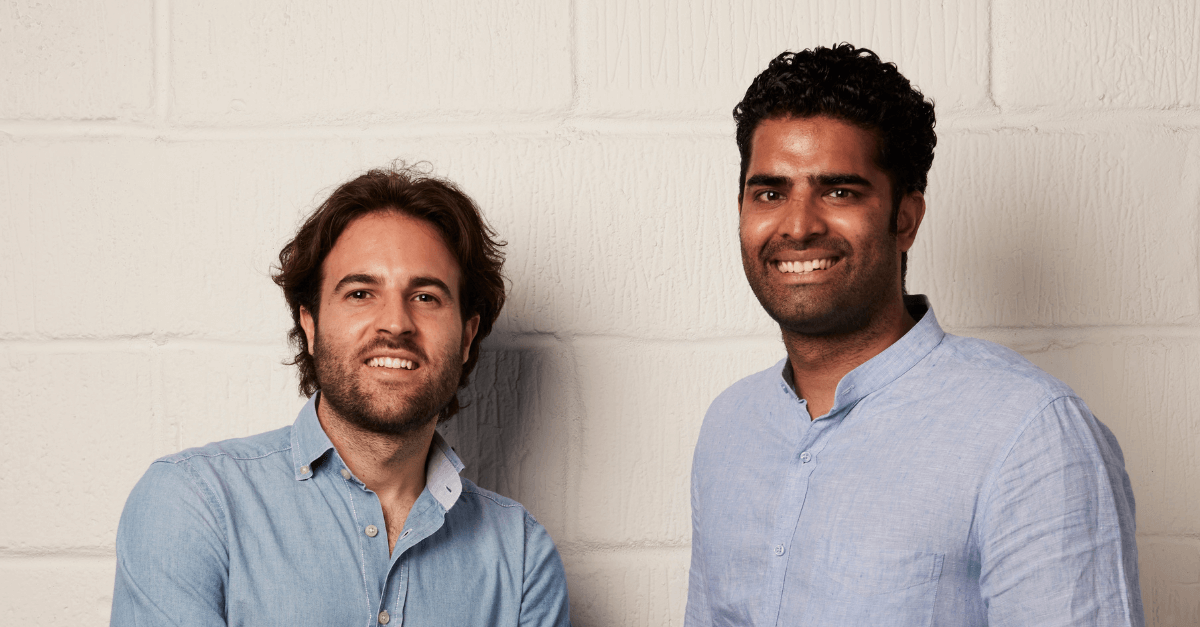Innovating to Encompass the Whole Student Journey: Founders Story

Unibuddy has just raised 20 million USD for our Series B round of funding and simultaneously celebrated our 5-year anniversary as a company. This is the story of Unibuddy so far as told by the founders, Diego Fanara, CEO, and Kimeshan Naidoo, CTO.
Diego’s story
Rewind to 2011, when an 18-year-old Diego Fanara was stepping off of the plane at Heathrow Airport for the very first time. He’d just made the decision to leave Switzerland, where he grew up with his family, to pursue a degree at Cass Business School in London.
Back in his hometown, Diego was a prospective student looking for guidance that would help him make what would be the biggest decision of his life up until that point.
Not knowing how or where to find the right information, he relied on university rankings and brochures to paint the picture of living in London.
After getting to grips with life as a student in a new country, he quickly found that his insights were sought after by friends, relatives, and other prospective students back home in Switzerland—addressing the problem that he himself had been trying to overcome only a short time before.
‘I always call it a problem because I felt alone in that decision. I didn’t have the support that I needed to find the insights that I needed to make the best decision or any decision, and there were no options available to help me,’ says Diego Fanara, now CEO and co-founder of Unibuddy.
‘I had the incentive to continue sharing, especially for people that are not family or friends, because I could see the power that insights have on shaping a prospective student’s perception of a university.’
Kimeshan’s story
The experience for Kimeshan Naidoo, CTO and the other half of Unibuddy’s founding team, was a parallel reality. He had made the decision to leave South Africa after three years at university to pursue a Master’s Degree in Computer Science at University College London.
‘I received a LinkedIn message from Diego about the problem he had. It really caught my attention because I had just moved to London from South Africa for university, and I didn’t know what to expect. He was trying to solve a problem that we shared,’ says Kimeshan.
‘We found out that we lived opposite the same roundabout near Old Street in London, so we met at the local coffee shop, and I was really, really excited about the idea.’
What began as a LinkedIn message swiftly turned into the acceptance of an offer to sign on and build the software—shortly thereafter, Unibuddy was born.
Q&A:
What were the initial challenges that you faced, and how did you manage to overcome them?
Kimeshan: The initial challenge when I joined was not having the holy grail of any company, which is product-market fit. We didn’t have a proven business model. We didn’t know who our customers were, what the product should look like, or what exactly we were trying to build.
So, we started by building a high school dashboard because we thought our customers were high schools initially, then we built a marketplace where we could connect students and prospective students on our own platform.
And then, finally, we came up with this embeddable web app that universities could put on their own websites, and would feel and look like their own website. That’s when we found that golden product-market fit.
We started off with five pilot universities—Queen Mary University. Royal Holloway University, Imperial College Business School, New College of Humanities, and Lancaster University —who agreed to try it out. But the next challenge was the fact that Unibuddy needed three products to work.
From day one we had to build a widget for university websites, a dashboard or app for ambassadors, and a dashboard for universities. To accomplish this, we often brought on recent graduates or people who were just students because they were also excited about the mission.
What do you view as the major turning points for Unibuddy over the past five years, and what are you the proudest to have achieved in that time?
Diego: There were really four turning points for me in the life of Unibuddy. The first one was when the widget went live on Queen Mary University’s website, and we saw the first messages. I still remember being in my living room in Shoreditch, reading the first conversation, and having to pinch myself.
The second was the international expansion when we realized that this was not just a UK thing—seeing the global impact.
The third was when we partnered with UCAS as an underdog. Having a governmental organization for the UK that trusted us to build a product that would integrate on their website was huge. That was when we knew we could be taken seriously across the industry.
The fourth was the events platform because when the pandemic happened, we saw the trust our partners put in us to launch something to help them through it.
Now we’re focused on keeping that momentum and building more products for them as we continue to take ourselves more seriously and focus on the potential that we have to make a global impact.
Kimeshan: I think all of those moments that Diego mentioned added up to bigger ones. Series A to now has been an incredible period of growth in retrospect—I feel like we became a real company and stopped being a startup.
We went from 20 people in one office to 120 people in three different offices around the world. And the past 12 to 18 months has really been a kind of Blitzscaling. It forces you to push yourself out of your comfort zone and to grow as fast or faster than the company on an individual scale.
What’s really meaningful is to see that we were able to go from helping students at 100 universities in the UK to helping students at 500 universities in 35 different countries. We’re at 15 million messages now and almost one million students that we’ve helped. If somebody had told us where we’d be now 18 months ago, nobody would have ever believed it.
Now that you’ve officially secured Series B funding, what are your plans to continue growing the company and ensuring future success?
Diego: Number one, this fundraiser will help us maintain our market leadership position in peer-to-peer as the number one software for student recruitment, and catapult our international expansion. We’ll be doubling down in the US and in the APAC regions with ambitions to increase our university coverage around the world.
Number two, from a product-development perspective, is to facilitate engagement along the entire student journey for better decision-making through peer-to-peer. Culturally, there’s also a desire to expand the team in different regions to become a more inclusive and diverse company.
With the Series B announcement, there comes external vision and internal vision—we want to help our company grow by attracting more talent to join us in our mission.
Kimeshan: We want every student at every university in the world to be able to use our product so that they can make better decisions. I’d also love if we could use the product development, and the upcoming growth, both to attract more talent and broaden the scale at which we’re going to work.
Ultimately, we want to innovate to encompass the whole journey and provide value to the student lifecycle from start to finish.
Sign up for the latest news and events
Don’t miss a thing
More posts like this

33+ Examples of US Universities Using Community Marketing for Student Recruitment
4th Aug 2021

5 Questions to Ask Before Starting your University’s Student-to-Student Marketing Program
1st Sep 2021

Unibuddy for international student recruitment
28th Jun 2021